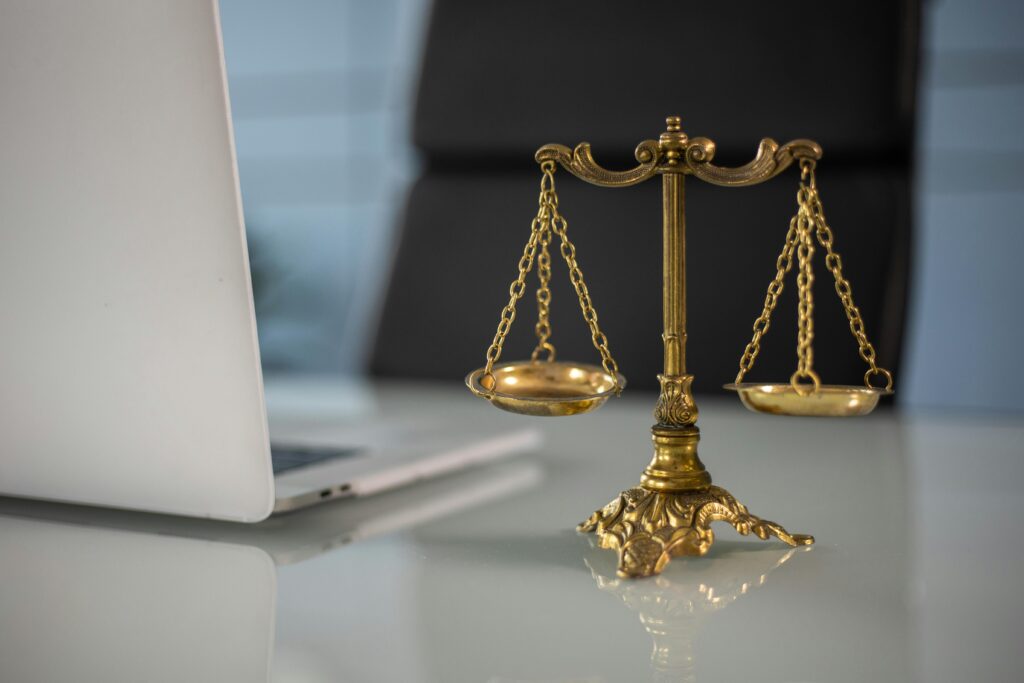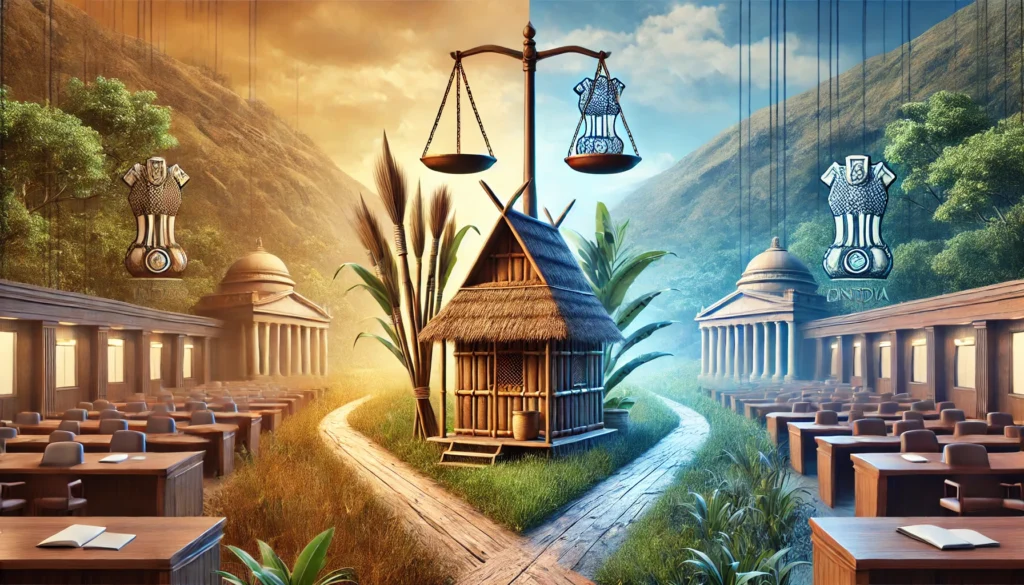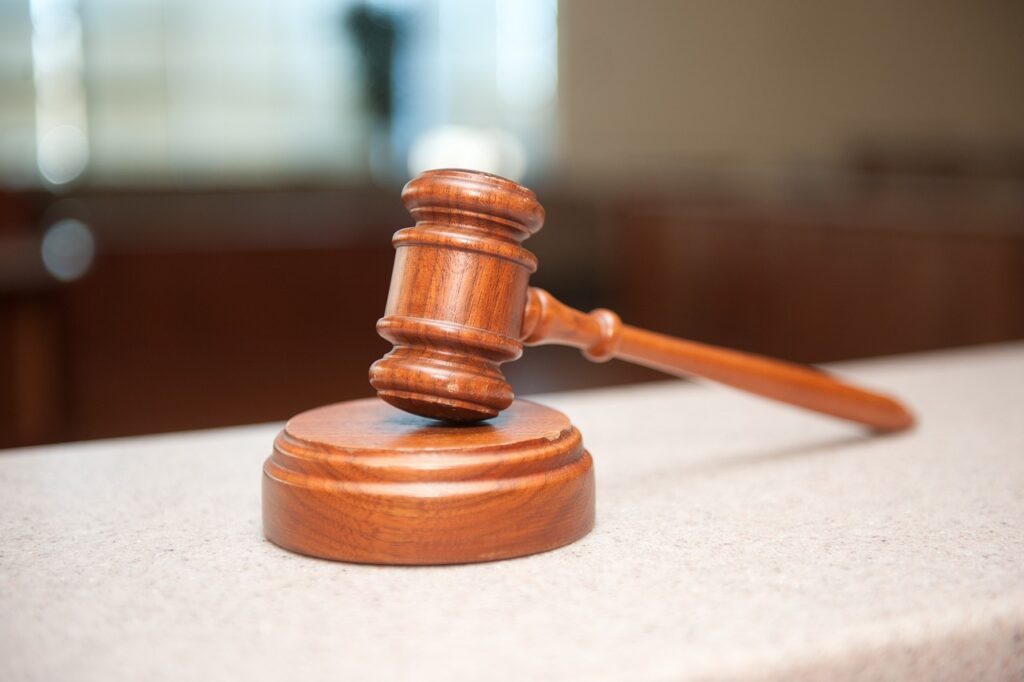Published On: October 15th 2025
Authored By: Rakesh Kr Chaurasiya
Department of Law, CMP Degree College, Prayagraj
Abstract
This article mainly focuses on the connection between judicial review and the principle of separation of powers as outlined in the Indian Constitution. A key point of discussion is its development, scope, extent, constitutional framework, and an analysis of significant judicial decisions. The conversation also delves into modern challenges and debates regarding judicial activism and potential overreach. The central inquiry revolves around whether checks and balances enhance or undermine the separation of powers. Additionally, how does the separation of powers engage with the independence of the judiciary?
Keywords: Separation of powers, constitutional law, Indian judiciary, comparative constitutional analysis, judicial review, democratic governance
Introduction
The judiciary assumes a place of great significance in a democratic polity. It resolves disputes between citizens, but it also resolves disputes between citizens and the State. Judicial review is the power of the judiciary to examine the constitutionality of legislative enactments and executive orders of both the Central and State governments. Whereas the separation of powers emphasizes the mutual exclusiveness of the three organs of the government, i.e. Legislature, the Executive, and the Judiciary. The doctrine of separation of powers aims to guard against tyrannical and arbitrary powers of the State.
The theory of checks and balances is an essential feature to control the authority from overreaching its power and playing an arbitrary role. Whereas the judicial review empowers the Courts to interpret the written constitution and validate the statutes. The judiciary is free from active political bias and has independent authority to interpret the Constitution.
Evolution of judicial review
The concept of judicial review originated in the United States of America in the landmark case of Marbury v. Madison (1803)[1], in which the U.S. Supreme Court held that it had the power of judicial review and could review the constitutionality of the Acts passed by Congress. The Court held that the Constitution seeks to define and limit the powers of the legislature, and it would be of no purpose if the legislature oversteps it every time. If the law is inconsistent with the Constitution and is not declared void, then the written constitution would lose all its significance.
Judicial Review: Concepts
“Judicial review has developed to the point where it is possible to say that no power, whether statutory or under the prerogative, is any longer inherently unreviewable. Courts are charged with the responsibility of adjudicating upon the manner of the exercise of public power, its scope, and its substance. Even when discretionary powers are engaged, they are not immune from judicial review.” – de Smith. All this has been quoted with approval by the Supreme Court.[2]
Judicial Review under the Indian Constitution
The doctrine of judicial review is a special feature of our Constitution, considering the fact that the Constitution is the suprema lex. The doctrine of judicial review has an implicit sanction in Articles 13, 32, 136, 142, and 226 of the Constitution of India. The Supreme Court in State of West Bengal v. Committee for Protection of Democratic Rights, West Bengal,[3] held that the power of judicial review is vested in the Supreme Court and High Courts under Articles 32 and 226, respectively. It is an integral and essential feature of the Constitution, constituting its basic structure.
Judicial review is the power of courts to pronounce upon the constitutionality of legislative acts which fall within their normal jurisdiction to enforce, and the power to refuse to enforce such as they find to be unconstitutional and hence void.[4] In the Fundamental Rights case[5], Khanna, J., said, “has thus become an integral part of our Constitutional System and a power has been vested in the High Courts and the Supreme Court to decide about the constitutional validity of the provisions of statutes. If the provisions of the statutes are found to be violative of any of the articles of the Constitution, which is the touchstone for the validity of all laws, the Supreme Court and the High Courts are empowered to strike down the said provisions”.
Scope of Judicial Review under the Indian Constitution
Article 13(2) provides that if a State makes a law which is inconsistent with any provisions of Part III, then to the extent of contravention, such law is void. It is the function of the court to assess individual laws vis-à-vis fundamental rights and strike down such a law that infringes fundamental rights. Article 13 makes the judiciary, especially the Supreme Court, guardian, protector, and interpreter of Fundamental Rights. A law is declared unconstitutional by the Supreme Court or High Court if it contravenes any of the fundamental rights.
Constitutional validity of Judicial Review
In State of Rajasthan v. Union of India[6], the Court held that the Supreme Court is the ultimate interpreter of the Constitution. The Supreme Court in Minerva Mills v. Union of India[7], held that it is the function of courts to pronounce the validity of laws. If the courts are deprived of this power, then the fundamental rights will become a mere adornment, and they will remain rights without authority. The constitutional validity of judicial review was challenged in L. Chandra Kumar v. Union of India[8], the Supreme Court held that judicial review is the basic structure of the Constitution. It means that the power of judicial review cannot be curtailed by constitutional amendments. In I.R. Coelho v. State of Tamil Nadu [9], held that laws placed under the Ninth Schedule are subject to judicial review if they violate the basic structure. The judiciary’s role in these decisions affirms its duty as the guardian of the Constitution. However, recent verdicts highlight new dimensions and limits of this power.
Development of the Doctrine of Separation of Powers
Philosophical Contributions to the Doctrine of Separation of Powers Philosopher Era Key Contributions Aristotle Ancient Greece Advocated for a mixed government model combining monarchy, aristocracy, and democracy, indirectly suggesting functional separations. Impact on Doctrine laid the foundational idea of distributing government functions. John Locke, 17th Century, distinguished between legislative and executive powers, advocating their separation to preserve liberty and law. Influenced later explicit separations in modern constitutions. Jean Bodin 16th Century, discussed the limits of sovereign power, emphasizing the need for legal restraint, but did not explicitly advocate for the separation of powers. Set the groundwork for the concept of divided sovereignty. Montesquieu 18th Century, formulated the Trias Politica model in “The Spirit of the Laws,” advocating for clear separation and balance among legislative, executive, and judicial powers. Popularised the separation of powers as essential for freedom and the prevention of tyranny.[10]
The Doctrine of Separation of Powers
The doctrine of separation of powers emphasizes the mutual exclusiveness of the three organs of the government, i.e., the Legislature, Executive, and Judiciary. According to this doctrine, the legislature cannot exercise executive or judicial power; the executive cannot exercise legislative or judicial power, and the judiciary cannot exercise the other two powers. The doctrine of separation of powers aims to guard against tyrannical and arbitrary powers of the State, The rationale behind the doctrine has been that if all power is concentrated in the same organ or person, there would arise the danger that it may enact tyrannical laws, execute them in a despotic manner, and arbitrarily interpret them without any external control.
The French Jurist Baron de Montesquieu, in his book ‘Esprit des Lois (The Spirit of Laws), published in 1748, for the first time enunciated the principle of separation of powers. That’s why he is known as a modern exponent of this theory. Montesquieu‘s doctrine, in essence, signifies the fact that one person or body of persons should not exercise all three powers of the Government, viz., legislative, executive, and judiciary. In other words, each organ should restrict itself to its sphere and refrain from transgressing the province of the other. In the view of Montesquieu:
“When the legislative and executive powers are united in the same person, or the same body or Magistrate, there can be no liberty. Again, there is no liberty if the judicial power is not separated from the Legislative and Executive powers. Where it joined with the legislative power, the life and liberty of the subject would be exposed to arbitrary control, for the judge would then be the legislator. Where it joined with the executive power, the judge might behave violently and oppression. There would be an end of everything were the same man or the same body to exercise these three powers…[11]
Comparative Jurisprudence
- Position in the U.S.A
In the U.S.A., the presidential system of government is based on the theory that there should be separation between the executive and the legislature. This is different from the system prevailing in Britain or India, where the parliamentary form of government is adopted. In the USA, legislative powers are vested in Congress (Article I), executive powers are vested in the President (Article II), and judicial powers are vested in the Supreme Court (Article III). The doctrine of separation of powers has been influenced by the growth of Administrative Law in the USA. The strict separation of powers theory was dented when courts introduced the system of delegated legislation in the USA.
- Position in the U.K.
The UK does have a kind of separation of powers in the true sense of the term. Concepts of checks and balances are more relevant in the UK. The three branches are not formally separated and continue to have significant overlap.
- Position in India
The doctrine of separation of powers has no place in the strict sense in the Constitution of India. The functions of different organs of the government have been earmarked so that one organ of the government does not usurp the functions of another. Under the Indian Constitution, the executive power is vested in the President, the legislative power is vested in Parliament, and the judicial power is vested in the Supreme Court. Although the Constitution has not recognized the doctrine of separation of powers in absolute rigidity but the functions of the different parts or branches of the government have been sufficiently differentiated.
In the re Delhi Laws Act case[12], the Supreme Court observed that although in the Constitution of India there is no express separation of powers, it is clear that a legislature is created by the Constitution and detailed provisions are made for making that legislature pass laws.
In Ram Jawaya Kapur v. State of Punjab[13], the Supreme Court held that the Constitution does not recognize separation of powers in its absolute rigidity.
In Keshvananda Bharati v. State of Kerala[14], C.J. S.M. Sikari, observed that the separation of powers between the legislature, executive, and the judiciary is a part of the basic structure of the Constitution. This structure cannot be destroyed by any form of amendment.
Doctrine of Checks and Balances
The theory of ‘checks and balances’ is meant to keep all organs of the Government, although separate, yet well balanced, having some form of check over another. In Supreme Court Advocates-on-Records Association v. Union of India[i][15], Justice Madan B. Lokur observed that separation of powers is an essential feature of the Constitution; however, such separation of powers is not as rigid as in the US Constitution. One of the elements of separation of powers is the system of ‘checks and balances.’
Evaluation of the Doctrine
In a strict sense, the principle of separation of powers cannot be applied in any modern Government, whether it may be the U.K., U.S.A., France, India, or Australia. But it does not mean that the principle has no relevance nowadays. Government is an organic unity. It cannot be divided into water-tight compartments. History proves this fact. If there is a complete separation of powers, the government cannot run smoothly and effectively. Smooth running of the government is possible only by co-operation and mutual adjustment of all three organs of the government. Prof. Garner has rightly said, “the doctrine is impracticable as a working principle of Government.” It is not possible to categorize the functions of all three branches of Government on a mathematical basis.
Judicial Activism
D.K. Basu v. State of West Bengal (1997)
This landmark ruling by the Supreme Court recognized custodial torture as a breach of the right to life as guaranteed by Article 21 of the Indian Constitution. The court’s decision emphasized the importance of safeguarding personal rights while maintaining its boundaries within the legislative framework, thus affirming its role within the judiciary.
Vishaka v. State of Rajasthan (1997)
In the lack of legal measures governing sexual harassment in the workplace, the Supreme Court established guidelines to safeguard women from such harassment, showcasing a form of judicial activism. Nonetheless, the court made it clear that these guidelines were provisional steps until suitable legislation was put in place.
Critique and Challenges of Separation of Powers and Judicial Review
The principles of separation of powers and judicial review are regarded as fundamental elements of constitutional democracy. The former aims to avoid the accumulation of power by distributing government functions among the legislative, executive, and judicial branches, whereas the latter allows courts to assess the legality of actions taken by the legislature and executive. Collectively, they uphold a balance of authority and safeguard the supremacy of the Constitution. Nevertheless, both principles encounter considerable criticisms and obstacles in their implementation.
- Judicial Overreach and Encroachment
Occasionally, courts may intervene in the functions of the executive or legislative branches under the guise of protecting constitutional principles (for instance, by issuing orders on policy matters). This compromises the principle of separation of powers.
- Executive Dominance
In parliamentary systems, the executive branch often exerts significant influence over the legislature due to majority support, which weakens the intended system of checks and balances.
- Subjectivity and Judicial Discretion
Judicial decisions can be swayed by the personal convictions or interpretive styles of the judges, leading to uneven applications of the law.
- Encroachment on Policy Matters
Through expansive interpretations, courts may become involved in socio-economic matters (such as environmental legislation, affirmative action, or governance programs), blurring the lines between judicial functions and policy-making.
- Balance Between Independence and Accountability
While the separation of powers aims to ensure judicial independence, the process of judicial review can lead to accusations of a lack of accountability, as judges are not subject to electoral processes.
Conclusion
The principles of separation of powers and judicial review are essential for upholding constitutional integrity and curbing the misuse of authority. However, there are critiques of these principles that underscore the conflict between legal theory and actual governance. The intention is not to eliminate these doctrines, but to refine them—making sure that judicial review does not transform into judicial supremacy, and that the separation of powers creates a framework marked by checks, balances, and collaboration appropriate for modern democracies. A complete separation is neither feasible nor beneficial in a contemporary welfare state.
References
[1] Marbury v. Madison, 5 U.S. 137 (1803)
[2] V. S. Pai, “SEPARATION OF POWERS AND CONTOURS OF JUDICIAL REVIEW.” [Online]. Available: https://nja.gov.in/Concluded_Programmes/2019-20/P-1187_PPTs/3.Separation%20of%20Powers%20and%20Contours%20of%20Judicial%20Review.pdf
[3] AIR 2010 SC 1476.
[4] E.S. Crown- Essay on the Judicial Review in Encyclopaedia of Social Sciences, Vol. VIII, p. 457.
[5] Keshvananda Bharati v. State of Kerala, AIR 1973 SC 1461.
[6] AIR 1977 SC 1361.
[7] AIR 1980 SC 1789.
[8] (1995) 1 SCC 400.
[9] AIR 2007 SC 861.
[10] A. Acharya and M. S. Hanspal, “Comparative analysis of separation of powers: Theoretical and practical insights from India,” International Journal of Political Science and Governance, vol. 7, no. 1, pp. 191–198, Jan. 2025, DOI: 10.33545/26646021.2025.v7.i1c.446.
[11] Pandey, J.N., Constitution of India, 60th edition 2023, p.29.
[12] AIR 1951 SC 332.
[13] AIR 1955 SC 549.
[14] AIR 1973 SC 1461.
[15] 2015 AIR SCW 260.




